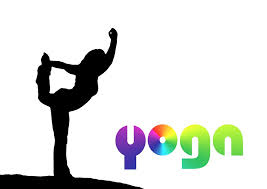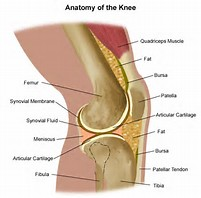Yoga seems to be increasing in popularity. If you are a member of a local gym, you will likely see it listed as one of the group fitness options. You may also have noticed that yoga studios are popping up in various parts of your city or town. And perhaps your doctor or someone that you know has recently recommended it to you. Though some have managed to overcome the negative stigma of yoga, others are still yet to be persuaded.
I am reminded of a conversation I had with a friend who had been complaining of pain in the knees, back and hips. Given what I know about this individual, although fitness was always important to him, like many, he was relying on modern traditional methods to help meet his weekly fitness goals – which primarily consisted of a combination of exercise machines and walking. Although the walking is not too concerning, exercise machines can sometimes be problematic. Though exercise machines were created to provide a safe alternative to free weights; they can put your body into unnatural positions and take your joints through dangerous ranges of motion which can lead to injuries overtime, thus leaving some searching for alternative exercises.
Yoga is a great form of exercise and has become a well-respected way of recovery from injuries. For example, according to the website spine-health.com – a site developed by a multi-specialty group of medical professionals, yoga can provide several healing benefits for people with various types of back pain such as: speeding up the time it takes to recover from an injury, preventing re-injury, and helping maintain a regular level of daily activities and thus reducing chances for disability. Other benefits of yoga include: improving flexibility, building muscle strength, preventing cartilage and joint breakdown, lowering your blood pressure, lowering blood sugar levels, boosting your immune system, reducing stress, improving your sex life and giving you a peace of mind.

However, despite the health and fitness benefits of yoga, still many have chosen to say, “NO” – especially men. In fact, according to a 2012 Yoga Journal Report, 83 percent of the more than 20 million yoga practitioners were woman, which may led some to wonder, why there is such a large disparity. Two of the common reasons I have heard from men as to why they do not practice yoga is that this is “not a real workout” or it is “only for women”.
The term Yoga covers religion, philosophy and practice and can be traced back to northern India. It is a mental, physical and spiritual practice and has a long and rich history that extends over 5, 000 years. The yoga that most people are familiar with today only dates back about 1851. It was introduced into western culture by teachers from India. Among them were Tirumalai Krishnamacharya (1888 – 1989), Sivananda Saraswati (1887 – 1963) and Swami Satchidananda.
Many yoga poses require you to support the weight of your own body in ways which includes: balancing on your hands (such as in a Hand Stand), balancing on one leg (such as in Tree Pose or Warrior Three) or by supporting yourself with your arms (such as in Downward Facing “Dog”, Three Legged “Dog”, or Quarter “Dog”). Interestingly, natural movements were at the core of exercise routines for centuries prior to the use of any modern day exercise equipment. This should encourage some (especially men) to consider using more natural methods that has proven historically to have positive results.
 Contributor Renna Reddick is a certified nutrition specialist, personal trainer and group fitness instructor. Certifications include: National Association of Sports Medicine (NASM), National Federation of Personal Trainers (NFPT) and Aerobics, Fitness Association of America (AFAA) Group Fitness Instruction, and NFPT Nutrition Specialist
Contributor Renna Reddick is a certified nutrition specialist, personal trainer and group fitness instructor. Certifications include: National Association of Sports Medicine (NASM), National Federation of Personal Trainers (NFPT) and Aerobics, Fitness Association of America (AFAA) Group Fitness Instruction, and NFPT Nutrition Specialist


